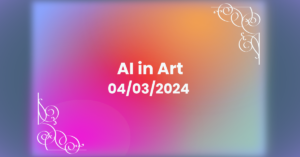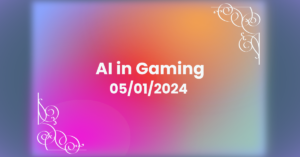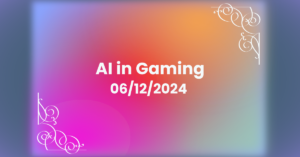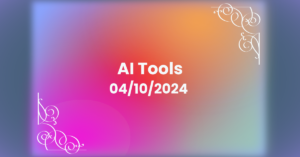Was This Written by AI? How to Avoid Robotic Content
Have you recently read an article, blog post, or essay and asked yourself, “Was this written by AI?” I certainly have.
As a content writer, I could go on and on about the benefits of generative AI. I’ve saved countless hours using tools like Quillbee, ChatGPT, and Perplexity to brainstorm ideas, research helpful sources, and generate solid first drafts. I also use Grammarly for AI-powered editing.
However, just because I use AI to help me write doesn’t mean I want my writing to sound like it was written by AI.
Table of contents
Common problems with AI content
If you’re a writer like me, you’ve probably experimented with several AI content generators. While these tools vary in quality (some are much better writers than others), I’ve noticed commonalities in AI-produced content.
Repetition
AI content generators are Large Language Models (LLMs). This means they find patterns and repeat them. They don’t create from scratch. Because of this, I often notice that AI-generated content is very repetitive. Every tool I’ve tried, without fail, will use the same phrase multiple times throughout a piece of content. It may not be noticeable at first glance, but it becomes very distracting as I read the whole article or blog.
Formulaic sentence structure
AI isn’t just repetitive with word choice; it also tends to repeat sentence structure. This is a clear AI giveaway since human writers usually get more creative and vary our phrasing. Take a look at this sample from ChatGPT. I’ve highlighted three sentences that follow the same format.

That’s a lot of repetition for one paragraph, and it makes the content sound robotic.
Formal tone
AI-generated writing tends to sound formal, professional, and even stuffy. There’s a time and place for all tones, and sometimes writers want this buttoned-up approach. But when it comes to blogs, web content, and marketing material, most modern writers lean toward a more conversational tone that helps people connect with what they’re reading.
How to humanize your content so no one asks, “Was this written by AI?”
Sure, generative AI isn’t perfect. But it’s still pretty awesome considering how new it is. And, just because we have to be wary of issues like repetition and tone doesn’t mean we can’t use AI to save our time and energy. I follow these best practices to humanize my writing:
Invest time and energy into great prompts
Prompts are the instructions we give generative AI tools so they understand what to produce. When we’re busy, it’s tempting to rush the prompting stage of content creation. But I’ve learned first-hand how crucial this first step is if I want to publish original, human-sounding content. AI writing is only as good as its prompt, so dedicate time and energy into your query. Remember, writing a top-notch prompt is still much faster than writing an entire article.
Quillbee prompts
With Quillbee, I take advantage of the Content Brief tool to input vital parameters like:
- Target keyword phrase
- Personal perspective
- Desired pronouns (like first-person or second-person)
- Tone
To give you a better idea of how this tool works, here’s a screenshot of the prompt I used for this very article:

ChatGPT prompts
If you use ChatGPT for content generation, prompting isn’t as clear-cut. There aren’t inputs for different needs like tone, keyword, etc. You have to incorporate these instructions into one thorough prompt. Thankfully, prompting has become such a hot topic there are plenty of resources out there, including free training courses and prompt generators.
I often use one called Snack Prompt. See how it helps me transform the previously shown paragraph about the benefits of daily exercise:

Okay, these results definitely made me laugh, and I’m not claiming I’d use this content as-is. But you can certainly see how changing the prompt made the writing more casual, engaging, and people-centric. (Giving credit where it’s due, I modified this request from one of the most popular article prompts on Snack Prompt, created by a user named Jino T. Thanks Jino!)
Edit and fact-check thoroughly
I’m getting better at prompting every day, but even if I become the greatest prompter to ever live, I’ll still need to thoroughly edit content generated by AI. As writers, we already understand how essential editing is. But editing AI content means we must be extra vigilant.
Watch out for the issues I already discussed, like repetitive phrases and sentence structure plus tone. Be sure everything sounds fresh and human-forward.
Additionally, it’s vital to fact-check any claims made by AI. Because of a strange phenomenon called AI hallucinations, machine-generated writing may include factual or nonsensical errors.
Personalize when possible
You spent time creating a great prompt and now you’ve got your AI-generated first draft. Fantastic! That’s several hours already saved. You’ll need to edit the draft of course, but as you do, start brainstorming ways to personalize the writing.
As I proofread, I like to make notes when sections or sentences remind me of something from my life. Later, I go back and add personal anecdotes or lessons learned. For example, after editing the first draft of this article, I added a personal touch by discussing my favorite prompt from Snack Prompt and gave other examples from my writing process.
This humanizes the piece and allows readers like you to connect with me — something that’s hard to do with an AI “author.”
Use an AI content detector
The rise of AI content generators also means a rise in concerns over ethics, especially in industries like education. To combat plagiarism and cheating (in situations where the writer is instructed NOT to use AI), people have developed AI content detectors. Simply copy and paste a written piece into these tools, and they estimate what percentage of the writing is AI-created.
I mention these detectors with a huge caveat. They are far from 100% accurate. In the past, I’ve even scanned content that I wrote independently, and it’s been flagged for AI generation. Still, AI detectors tend to notice when a piece is sounding robotic, so they’re a great resource for assessing your tone and writing style.
Say goodbye to robotic content
If you simply copy the content AI generates and publish it or submit it for review as-is, it’s like waving a giant red flag that screams, “AI WROTE THIS!”
AI is meant to help human writers, not replace us. Our work is far from over after writing that initial prompt. To create written content that sounds human, empathetic, and engaging, we have to be wary of the pitfalls of AI writing. We also have to thoroughly edit and infuse our personal experiences throughout the piece.
The above best practices have helped me avoid the question, “Was this written by AI?” Start following them today to humanize your work while still reaping the rewards of AI assistance.







